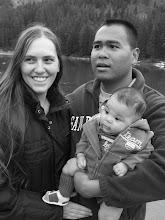Tuesday, March 31, 2009
What Classical Feng Shui is NOT
The location of the front door is used to orient thses maps. For example in the Black Sect theory the left hand corner is the wealth corner while in the Life Aspirations theory the left hand corner is the career area.
Cures are used to correct "problems" These cures are often mirrors, crystals, windchimes, I ching coins, statues and many others.
For more information on how thsese Modern or McFeng Shui conflict with Classical or Tradition Feng Shui check out. http://www.qi-whiz.com/
Thursday, March 26, 2009
What is Classical Feng Shui?

Introduction
Classical Feng Shui is an Ancient Chinese system that uses concepts from Chinese medicine and the I Ching to find the most auspiscious location for your home and to create a healthy flow of energy or Chi in the home. Feng Shui translates as Wind Water in Chinese.
History
Acheaologist have found artifacts from grave sites that suggest that some of the basic principles of Feng Shui were being used by the Neolithic Chinese as far back as 6000 b.c. It was during the Tang dynasty (618-907 c.e.) that Feng Shui came into its own and developed many of techniques we use today.
Important building blocks of Classical Feng Shui
Feng Shui is a system based on the observation of time as viewed in the heavens and on earthly forces and how the two ineract. When using Feng Shui why strive to balnce the qi (energy) of the two. The idea is when thses forces are in harmony our lives and homes improve.
Every Feng Shui practitioner will carry a compass. A Lupoan compass is a traditional compass that has cocentric rings will additonal information.
When using the Flying Star technique the magnetic direction of where the home sits (the back), and when the home was built are used to draw a qi map of the home. The year the occupants were born is used to determine how well the house works with them and their most favorable spaces in the home.
The Five Elements (fire, earth, metal, water and wood) are used to balance the qi (energy) in the home.
Form School (Xingfa)
Within Classical Feng Shui there are two methods or schools that are used together. The first and oldest is Form School or Xingfa. The Form school is also the most intuitive and easy to understand of the two schools. when using the Form method you examine your natural surrounding to find the most peaceful areas for your home. For example the ideal location would have mountains at you back with a lake or natural water feature at the front.
Compass School
The term Compass school is actually a western term, in Chinese it is called Liqi Pai or Patterns of Qi school. Within the Compass School there are different techinques that are used. They are Flying Star (Xuankong Feixing), Three Harmonies (sanhe), Mystical doors (Qi Men), and Changing triagrams (Yigua).
The core of Compass school is that each of the eight cardnial directions, north, northeast, east, southeast, south, southwest, west, north west, have a unique type or flavor of qi. Surrounding this core premise numerology, astrology and other factors are added. Compass school is not intutitive, it relies on computaions, observation and intellect.
